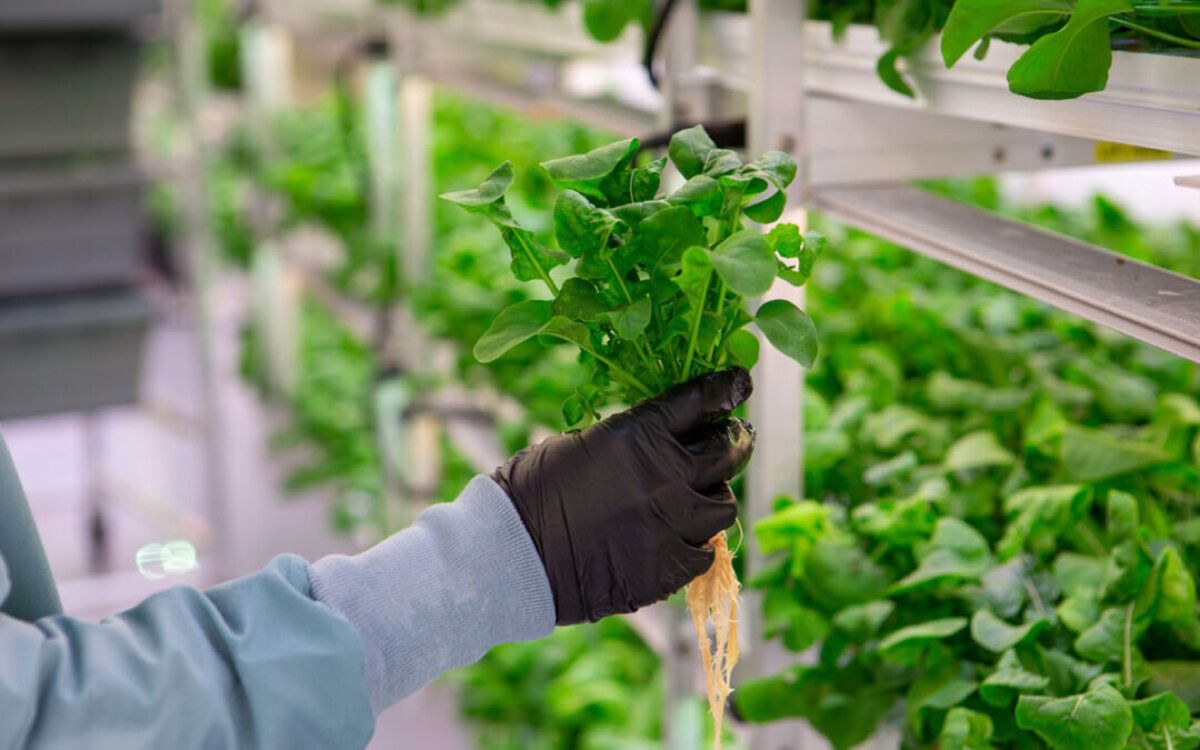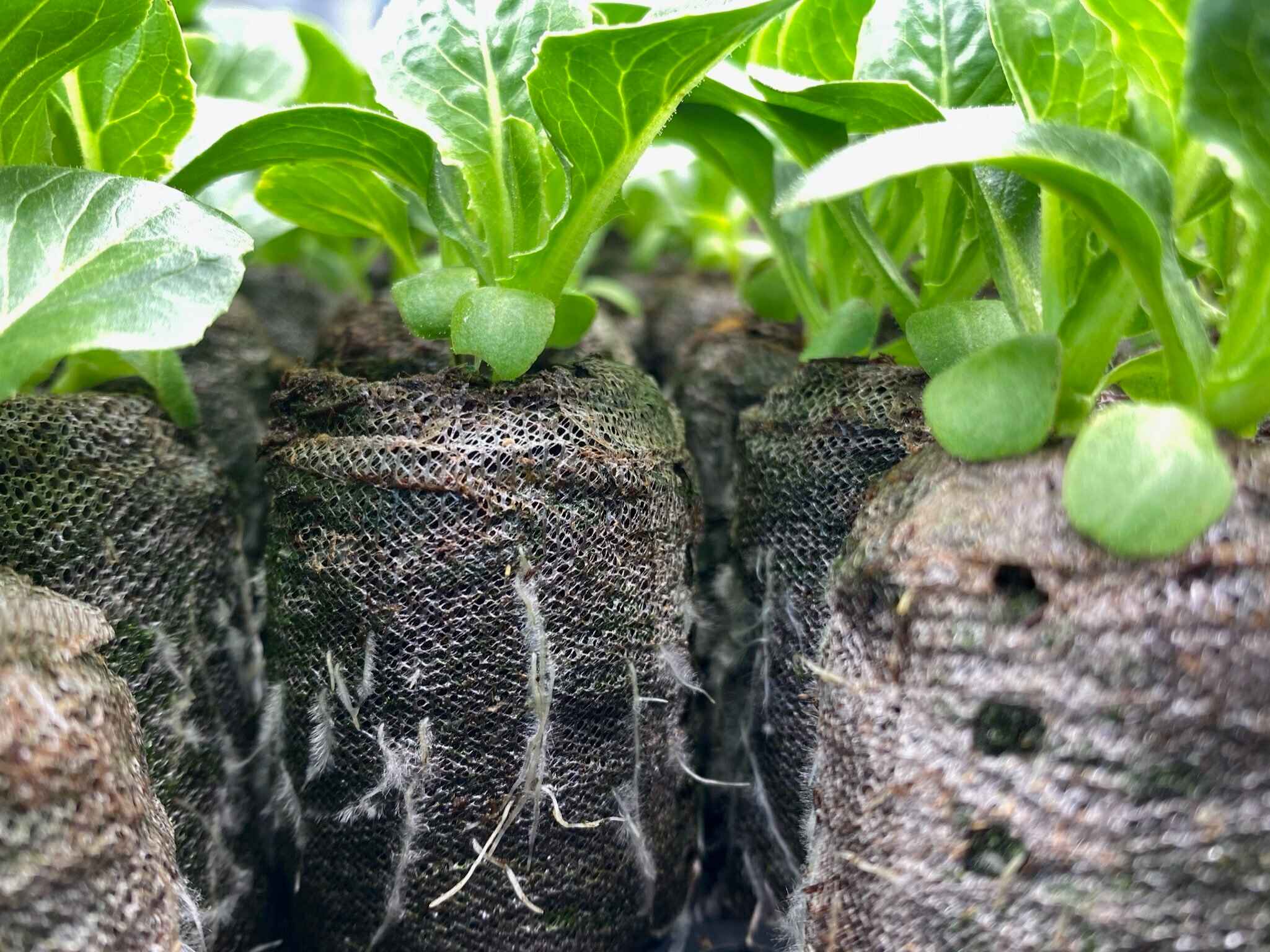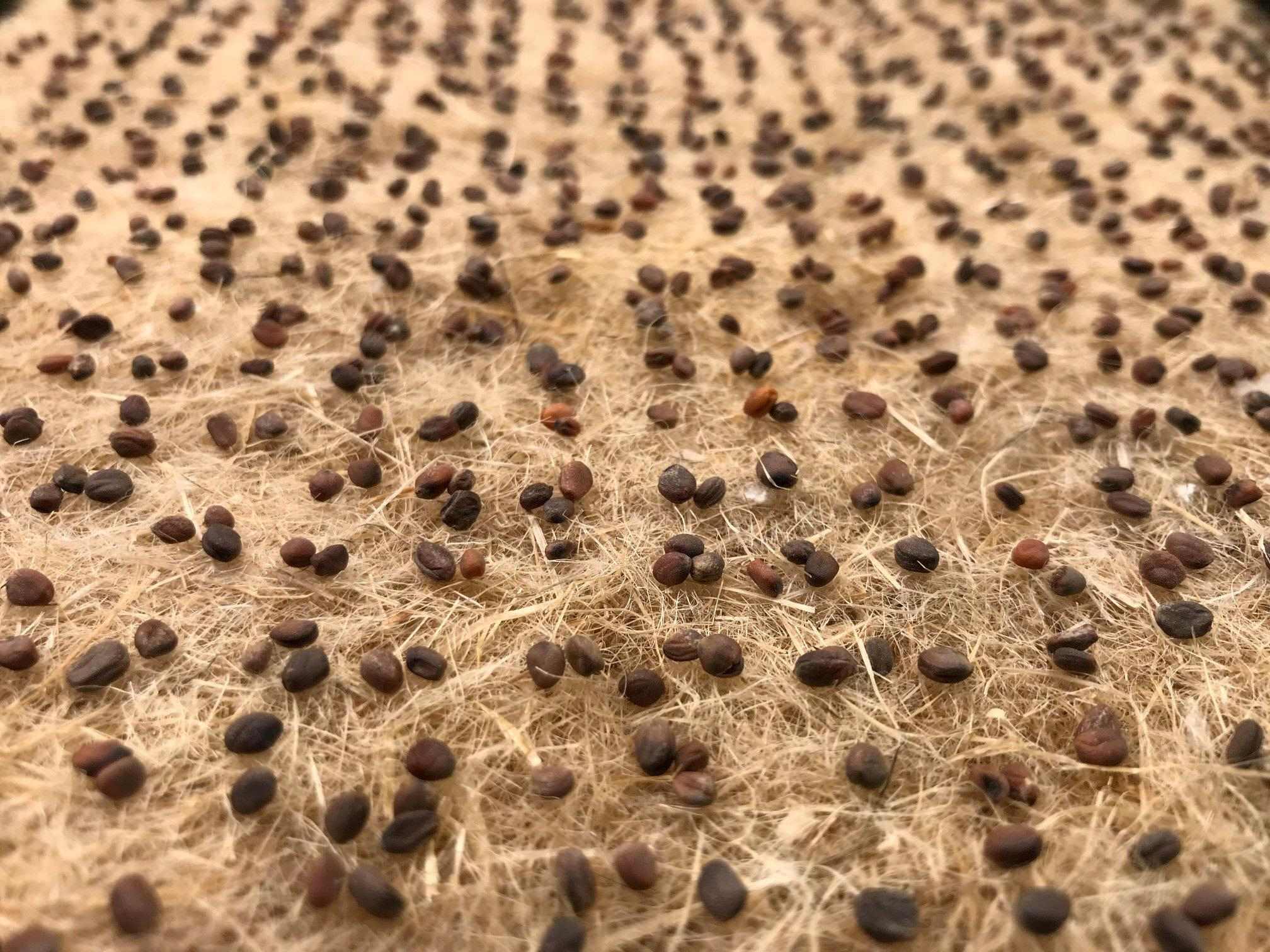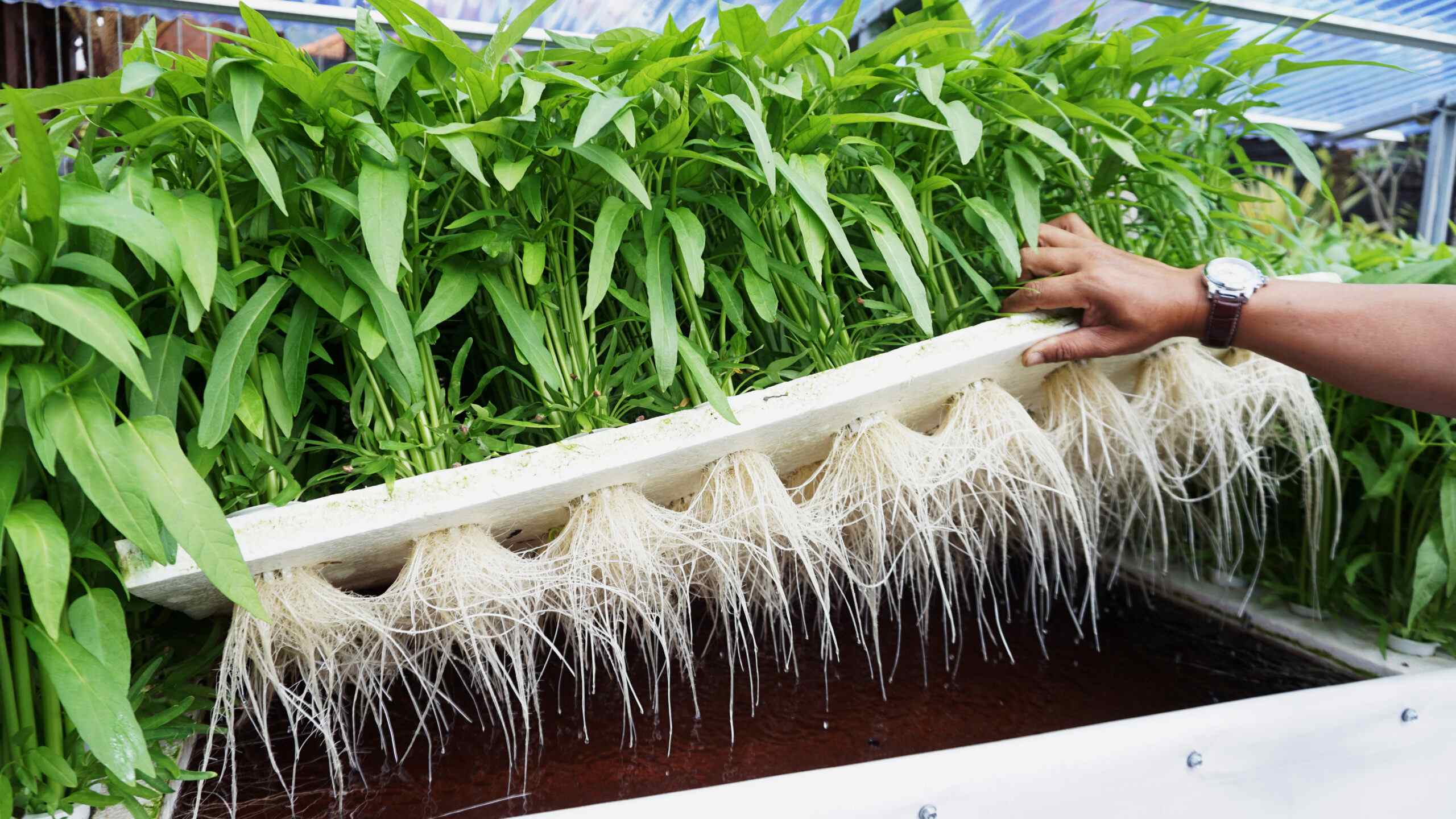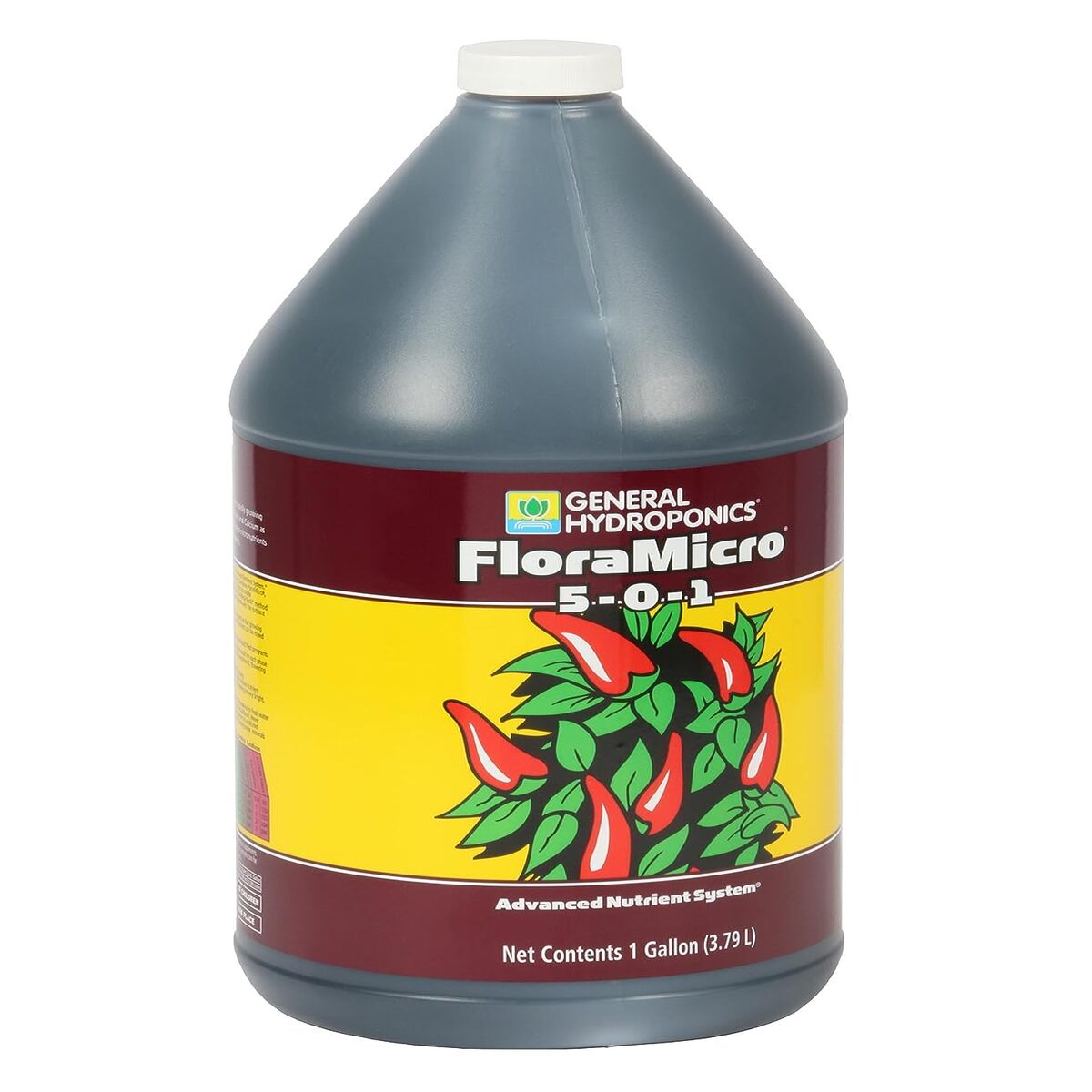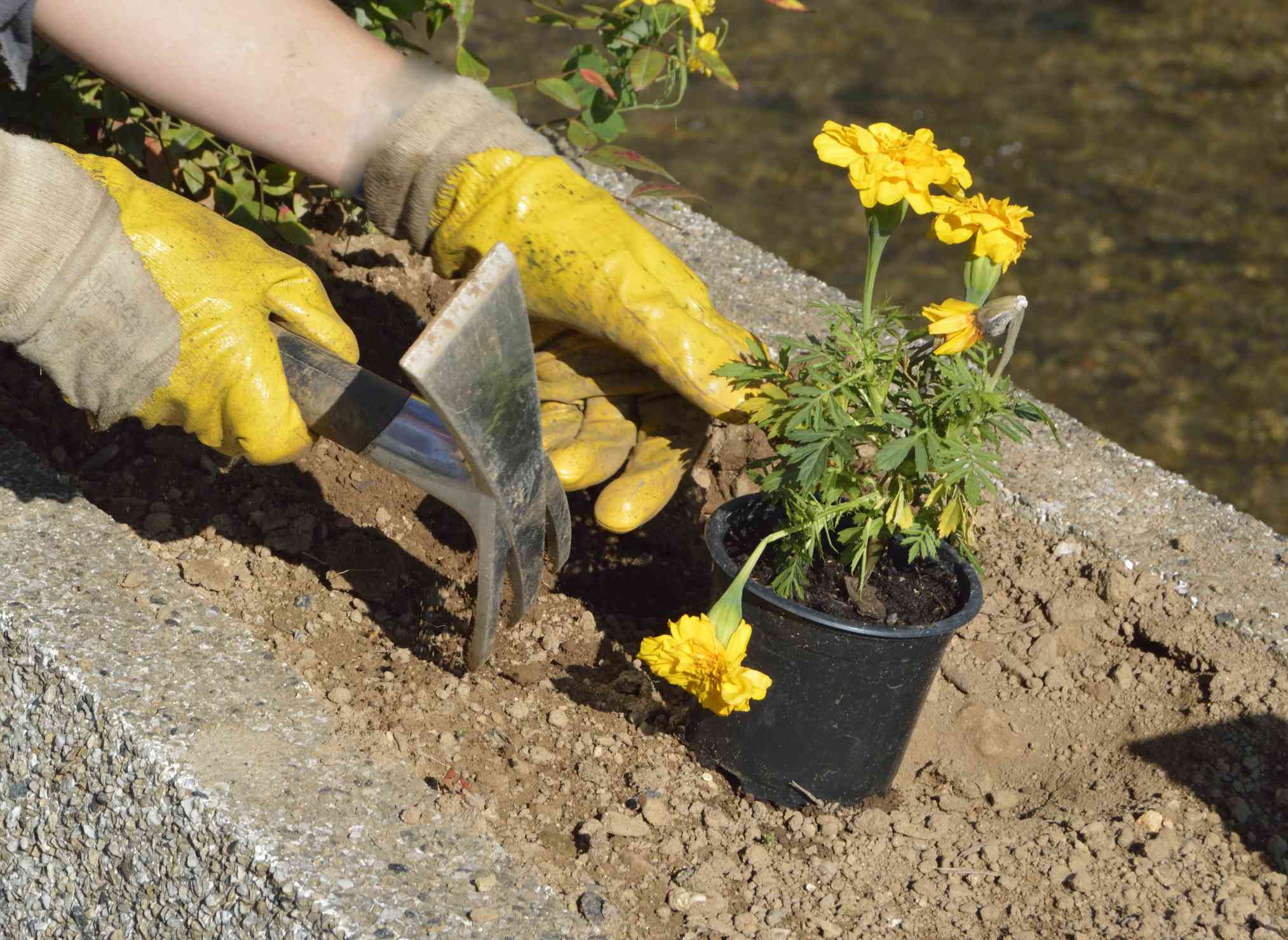Home>Gardening Tips and Tricks>Eco-Friendly Gardening>How To Use Clay Pebbles In Hydroponics
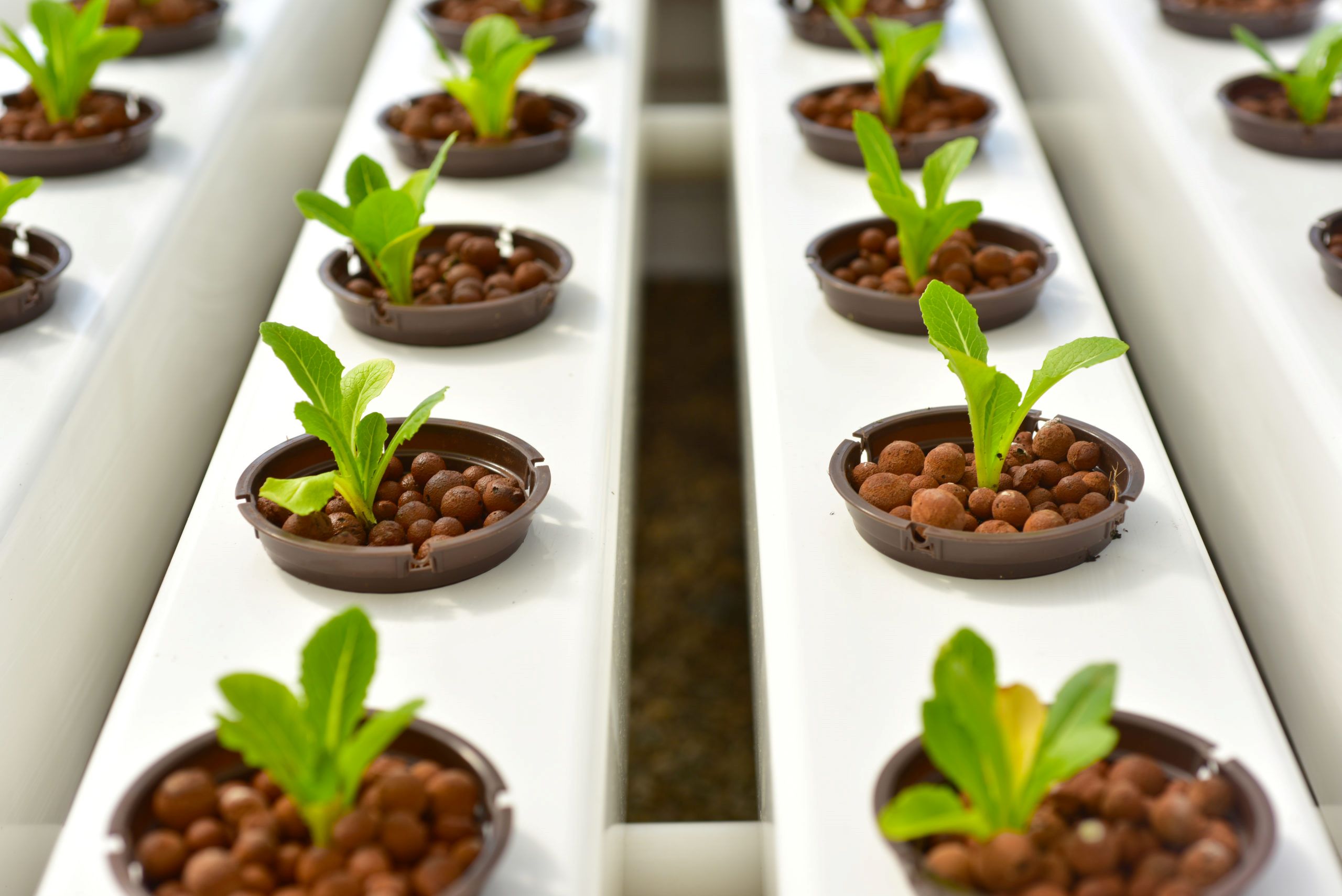

Eco-Friendly Gardening
How To Use Clay Pebbles In Hydroponics
Modified: January 22, 2024
Learn how to incorporate clay pebbles into your hydroponic system for eco-friendly gardening. Enhance plant growth and nutrient absorption with this sustainable gardening technique.
(Many of the links in this article redirect to a specific reviewed product. Your purchase of these products through affiliate links helps to generate commission for Chicagolandgardening.com, at no extra cost. Learn more)
Table of Contents
- Introduction
- What are clay pebbles?
- Benefits of using clay pebbles in hydroponics
- Choosing the right clay pebbles for hydroponics
- Preparing clay pebbles for use in hydroponics
- Setting up a hydroponic system with clay pebbles
- Maintaining clay pebbles in a hydroponic system
- Troubleshooting common issues with clay pebbles in hydroponics
- Conclusion
Introduction
Welcome to the world of hydroponics! Imagine growing your own plants without soil, using only water and a nutrient-rich solution. Hydroponics is a method of cultivating plants that has gained popularity in recent years, not only for its efficient use of resources but also for its ability to produce abundant, healthy crops in limited space.
One key element in any successful hydroponic system is the growing medium. While there are various options available, clay pebbles have emerged as a popular choice among hydroponic enthusiasts. These small, lightweight, and porous balls of clay provide an ideal environment for plant roots to grow and thrive.
In this article, we will explore the world of clay pebbles in hydroponics and how they can revolutionize your gardening experience. We will discuss the benefits of using clay pebbles, guide you through the process of selecting the right ones, and provide step-by-step instructions on how to set up a hydroponic system using clay pebbles. Additionally, we will explore how to maintain and troubleshoot common issues that may arise when using clay pebbles in your hydroponic setup.
Whether you are a beginner or an experienced gardener looking to explore a more sustainable and efficient way of growing plants, this article will equip you with the knowledge you need to harness the power of clay pebbles in your hydroponic garden.
What are clay pebbles?
Clay pebbles, also known as hydroton, expanded clay, or LECA (Lightweight Expanded Clay Aggregate), are small clay balls that have been fired in a kiln. These 100% natural, inert, and pH-neutral pebbles are lightweight and have a honeycomb-like structure with tiny air pockets. This unique structure allows them to retain moisture and nutrients while providing excellent drainage and aeration in hydroponic systems.
Clay pebbles are made from clay that is heated to high temperatures, causing it to expand and form lightweight, porous balls. The process of firing results in a dry, sterile, and lightweight medium that is perfect for various hydroponic applications.
One of the main advantages of using clay pebbles in hydroponics is their ability to provide an optimal balance of water and oxygen to plant roots. The porous nature of the pebbles allows excess water to drain away, preventing root rot and ensuring that the roots have access to oxygen. At the same time, the clay pebbles can absorb and retain moisture, providing a steady supply of water and nutrients to the plants.
Clay pebbles offer several benefits that make them an ideal choice for hydroponic gardening. Their pH-neutral nature ensures that they do not affect the nutrient solution’s pH, providing a stable environment for plant growth. The lightweight composition of the pebbles makes them easy to handle and transport. Additionally, clay pebbles are reusable, making them an eco-friendly option for growers.
Overall, clay pebbles are an excellent growing medium for hydroponics due to their lightweight structure, moisture retention capacity, and ability to provide both water and oxygen to plant roots. In the next section, we will delve further into the benefits of using clay pebbles in hydroponics.
Benefits of using clay pebbles in hydroponics
Clay pebbles offer a range of advantages that make them a popular choice for hydroponic gardening. Let’s explore some of the key benefits:
- Excellent drainage and aeration: The porous structure of clay pebbles allows for efficient drainage, preventing waterlogging and root rot. This ensures that plant roots have access to oxygen, promoting healthy growth and nutrient uptake.
- Moisture retention: Clay pebbles have a unique ability to absorb and retain moisture, providing a steady supply to plant roots. This helps maintain optimal moisture levels, reducing the risk of underwatering or overwatering plants in a hydroponic system.
- pH-neutral: Clay pebbles are pH-neutral, meaning they will not alter the pH of the nutrient solution. This stability allows growers to have better control over the nutrient balance and pH levels, creating an optimal environment for plant growth.
- Reusable: Unlike some other growing mediums, clay pebbles can be reused multiple times, making them a sustainable and cost-effective option. After a crop cycle, the pebbles can be cleaned and sterilized before being used again, reducing waste and saving money in the long run.
- Lightweight and easy to handle: Clay pebbles are lightweight, making them easy to transport and handle. This feature is particularly advantageous for larger hydroponic systems or if you need to move your plants around.
- Reduced risk of pests and diseases: The inert nature of clay pebbles minimizes the risk of pests, fungi, and diseases in a hydroponic system. This allows growers to focus on providing an optimal growing environment for plants rather than combating common soil-based issues.
- Supports strong root development: The honeycomb-like structure of clay pebbles provides a supportive and stable foundation for plant roots. This encourages healthy root growth, leading to stronger, more resilient plants.
These benefits make clay pebbles an excellent choice for various hydroponic applications, from home gardens to commercial setups. In the next section, we will discuss the factors to consider when choosing the right clay pebbles for your hydroponic system.
Choosing the right clay pebbles for hydroponics
When it comes to selecting the right clay pebbles for your hydroponic system, there are a few factors to consider. Let’s explore them:
- Size: Clay pebbles come in different sizes, ranging from small to large. The size you choose will depend on the type of hydroponic system you have and the plants you intend to grow. Smaller pebbles work well for smaller plants, while larger pebbles are suitable for larger plants with robust root systems.
- Density: Consider the density of the clay pebbles, as it will impact water retention and drainage. Lighter, more porous pebbles tend to provide better aeration and drainage, whereas denser pebbles may retain more moisture. Choose the density that aligns with the specific needs of your plants and the requirements of your hydroponic system.
- Quality: It’s important to choose high-quality clay pebbles that are clean, uniform in size, and free from contaminants. Look for pebbles that have been kiln-fired at high temperatures to ensure sterility and prevent the growth of unwanted organisms.
- Sourcing: When selecting clay pebbles, consider the source and how they were extracted. Opt for pebbles that are sustainably sourced and environmentally friendly. This will ensure that your hydroponic system aligns with eco-friendly gardening practices.
- Availability: Check the availability of clay pebbles in your local area or online. If the pebbles are readily accessible, it will be easier for you to maintain a consistent supply for your hydroponic system.
It’s worth noting that some manufacturers offer pre-washed and pre-soaked clay pebbles, which can save you time and effort in the preparation process. These pre-treated pebbles are typically clean and ready to use, making them convenient for beginners or those who prefer a hassle-free gardening experience.
Consider the specific needs of your hydroponic system and plants when choosing the right clay pebbles. Keeping these factors in mind will ensure that you select pebbles that provide optimal support, drainage, and moisture retention for your plants’ roots.
In the next section, we will guide you through the process of preparing clay pebbles for use in your hydroponic system.
Preparing clay pebbles for use in hydroponics
Before you introduce clay pebbles into your hydroponic system, it’s important to properly prepare them to create an optimal environment for plant growth. Follow these steps to prepare the clay pebbles:
- Rinse the pebbles: Start by rinsing the clay pebbles thoroughly to remove any dust or debris. Place the pebbles in a colander or sieve and rinse them gently under running water. Continue rinsing until the water runs clear. This step will help eliminate any residual clay particles or impurities.
- Soak the pebbles (optional): While soaking the clay pebbles is not necessary, it can help improve their water-holding capacity and reduce the risk of leaching excess nutrients from the root zone. If you choose to soak the pebbles, place them in a clean container and fill it with water. Let the pebbles soak for a few hours or overnight. Drain the excess water from the container before using the pebbles.
- Sterilize the pebbles (optional): If you want to ensure maximum cleanliness and sterilization, you can opt to sterilize the clay pebbles. This step is particularly useful if you are reusing pebbles or if you want to eliminate any potential pathogens or contaminants. To sterilize the pebbles, you can use a solution of hydrogen peroxide or a mild bleach solution. Follow the manufacturer’s instructions for dilution and soak the pebbles for the recommended time. Rinse the pebbles thoroughly after sterilization to remove any residual solution.
- Allow the pebbles to dry: After rinsing and optional soaking or sterilizing, allow the clay pebbles to air dry completely before using them in your hydroponic system. This will help prevent excess moisture and potential mold or bacterial growth in your system.
- Inspect for quality: Before using the clay pebbles, inspect them for any signs of damage or degradation. Discard any pebbles that are broken, crushed, or misshapen, as they may not provide adequate support for plant roots.
Once your clay pebbles are properly prepared, they are ready to be used in your hydroponic system. In the next section, we will guide you through the process of setting up a hydroponic system using clay pebbles as the growing medium.
Setting up a hydroponic system with clay pebbles
Setting up a hydroponic system using clay pebbles as the growing medium is a straightforward process. Follow these steps to get started:
- Choose a container: Select a suitable container to hold the clay pebbles and plant roots. This can range from a simple plastic tray to a specialized hydroponic system. Ensure that the container is clean and free from any contaminants.
- Add a layer of clay pebbles: Start by adding a layer of clay pebbles to the bottom of the container. This layer will serve as the foundation for the plant roots and provide stability. The depth of the pebble layer will depend on the size of your plants and the root system. Aim for a layer that allows adequate root support without overcrowding.
- Plant your seeds or seedlings: Gently plant your seeds or seedlings into the clay pebbles, ensuring that the roots are well-covered and supported. Make sure to space your plants appropriately to allow for growth and airflow.
- Add nutrient solution: Once your plants are in place, it’s time to add the nutrient solution. Mix the appropriate amount of hydroponic nutrients with water according to the instructions provided. Slowly pour the nutrient solution onto the clay pebbles, allowing it to saturate the medium and reach the roots.
- Monitor and adjust: Regularly monitor the moisture levels in the clay pebbles and the nutrient solution. The pebbles should remain moist but not waterlogged, and the nutrient solution should be replenished as needed to maintain the proper balance. Adjust the pH and nutrient levels as required for optimal plant growth.
- Provide adequate lighting and ventilation: Place your hydroponic system in a location that receives appropriate lighting for your plants’ needs. Ensure that there is proper airflow and ventilation to prevent the buildup of excess humidity and maintain a healthy growing environment.
Remember to follow best practices specific to the type of plants you are cultivating, including temperature, lighting, and humidity requirements. Regularly check for any signs of nutrient deficiencies, pest infestations, or other issues and address them promptly.
Setting up a hydroponic system with clay pebbles provides a controlled and efficient method for growing plants. In the next section, we will discuss how to maintain clay pebbles in your hydroponic system for long-term success.
Maintaining clay pebbles in a hydroponic system
Maintaining the health and performance of your clay pebbles in a hydroponic system is essential for the successful growth of your plants. Follow these tips to properly maintain your clay pebbles:
- Monitor moisture levels: Check the moisture levels in the clay pebbles regularly. They should remain moist but not overly saturated. Adjust the watering schedule or drainage system as needed to maintain optimal moisture levels for your specific plants.
- Flush regularly: Over time, salts and excess nutrients can accumulate in the clay pebbles, affecting their pH levels and nutrient balance. Flushing the pebbles regularly with plain, pH-neutral water can help remove any buildup. Simply pour water over the pebbles until it drains out of the system, flushing away the excess salts and maintaining a healthy environment for your plants.
- Monitor pH and nutrient levels: Test and adjust the pH and nutrient levels of your hydroponic solution regularly. This ensures that the clay pebbles and plants receive the adequate nutrients they need for healthy growth. Follow the instructions provided with your chosen nutrient solution for the appropriate pH and nutrient range for your specific plants.
- Clean and sterilize: Clean the hydroponic system and clay pebbles between crop cycles to prevent the growth of harmful pathogens or pests. Remove any plant debris or dead roots and rinse the pebbles thoroughly. If necessary, sterilize the pebbles using a mild bleach solution, hydrogen peroxide, or other suitable sterilizing agents. Rinse them well before reusing them.
- Inspect for root blockage: Regularly inspect the clay pebbles for any root blockage. Sometimes, roots can become tangled or overgrow, restricting water and nutrient uptake. Gently remove and trim any excess roots to encourage healthier growth.
- Replace pebbles if necessary: Over time, clay pebbles can break down or become compacted. If you notice a significant degradation in the pebbles’ quality, it’s advisable to replace them with fresh ones to maintain optimal support and aeration for the plant roots.
Proper maintenance of your clay pebbles will help ensure the long-term productivity of your hydroponic system. Regular monitoring, cleaning, and adjustments will promote healthy plant growth and a thriving hydroponic environment.
In the next section, we will explore common issues that may arise when using clay pebbles in a hydroponic system and how to troubleshoot them effectively.
Troubleshooting common issues with clay pebbles in hydroponics
While using clay pebbles in hydroponics can bring numerous benefits, you may encounter a few common issues along the way. Understanding these issues and knowing how to troubleshoot them will help maintain the health and productivity of your hydroponic system. Here are some common issues and their solutions:
- Root rot: If your plants’ roots appear brown, slimy, and have a foul smell, it’s likely a sign of root rot. This is often caused by excessive moisture, poor drainage, or overwatering. To address this issue, ensure that the clay pebbles have proper drainage and adjust your watering schedule accordingly. You can also consider adding beneficial microbes or using hydrogen peroxide in the nutrient solution to combat root rot.
- pH imbalance: Fluctuations in pH can inhibit nutrient uptake and negatively affect plant growth. Test the pH of your nutrient solution regularly and adjust as needed to maintain the appropriate pH range for your plants. If the pH is too high, you can lower it using pH-down solutions, and if it is too low, use pH-up solutions.
- Nutrient deficiencies or toxicities: Insufficient or excessive nutrient levels in the solution can cause nutrient deficiencies or toxicities in plants. Monitor the nutrient levels and follow the recommended dosage guidelines for your specific plants. Adjust the nutrient solution concentration as required to provide the necessary nutrients without overloading the plants.
- Pest infestations: Although clay pebbles minimize the risk of pests, they are not completely immune. Inspect your hydroponic system regularly for signs of pests, such as small insects or webs. Address any infestations promptly using appropriate pest control methods, such as insecticidal soaps or natural predators, to protect your plants.
- Algae growth: Algae growth can occur in a hydroponic system due to excess light or nutrient imbalances. To reduce algae growth, ensure that your hydroponic system is not exposed to direct sunlight and that light leaks are minimized. Adjust the nutrient solution to prevent excessive nitrogen levels, which can contribute to algae growth. Additionally, maintain good hygiene by regularly cleaning and sterilizing your system.
- Waterlogging: If the clay pebbles become waterlogged and fail to drain properly, it can lead to oxygen deprivation for the roots and subsequent plant stress. Ensure that your hydroponic system has sufficient drainage and adjust your watering schedule accordingly. Consider adding more drainage holes or using a different container if waterlogging persists.
By addressing common issues promptly and adopting preventive measures, you can maintain a healthy hydroponic system using clay pebbles. Regular monitoring, adjustments, and proper maintenance will help ensure optimal plant growth and a fruitful hydroponic gardening experience.
Now that you are equipped with troubleshooting knowledge, you can enjoy the benefits of using clay pebbles in hydroponics without being hindered by common issues.
Conclusion
Using clay pebbles in hydroponics offers numerous benefits for both beginner and experienced gardeners. Their excellent drainage and aeration properties, moisture retention capacity, pH-neutral nature, reusability, and support for strong root development make them an ideal growing medium for hydroponic systems.
By choosing the right clay pebbles, properly preparing them, and setting up a hydroponic system, you can enjoy the advantages of this sustainable gardening method. Maintaining the clay pebbles and troubleshooting common issues ensures the long-term success of your hydroponic system.
Remember to regularly monitor moisture levels, flush and clean the pebbles as needed, adjust pH and nutrient levels, and address any pest infestations or imbalances promptly. By staying vigilant and proactive, you can ensure optimal plant growth and maximize the productivity of your hydroponic garden.
Whether you are growing herbs, vegetables, or flowers, clay pebbles provide a versatile and efficient medium for hydroponic gardening. Embrace the world of hydroponics and experience the joy of cultivating healthy, vibrant plants in a sustainable, soil-less system.
So get ready to embark on your own hydroponic gardening journey with clay pebbles and enjoy the exciting rewards of this eco-friendly and innovative approach. Happy gardening!

